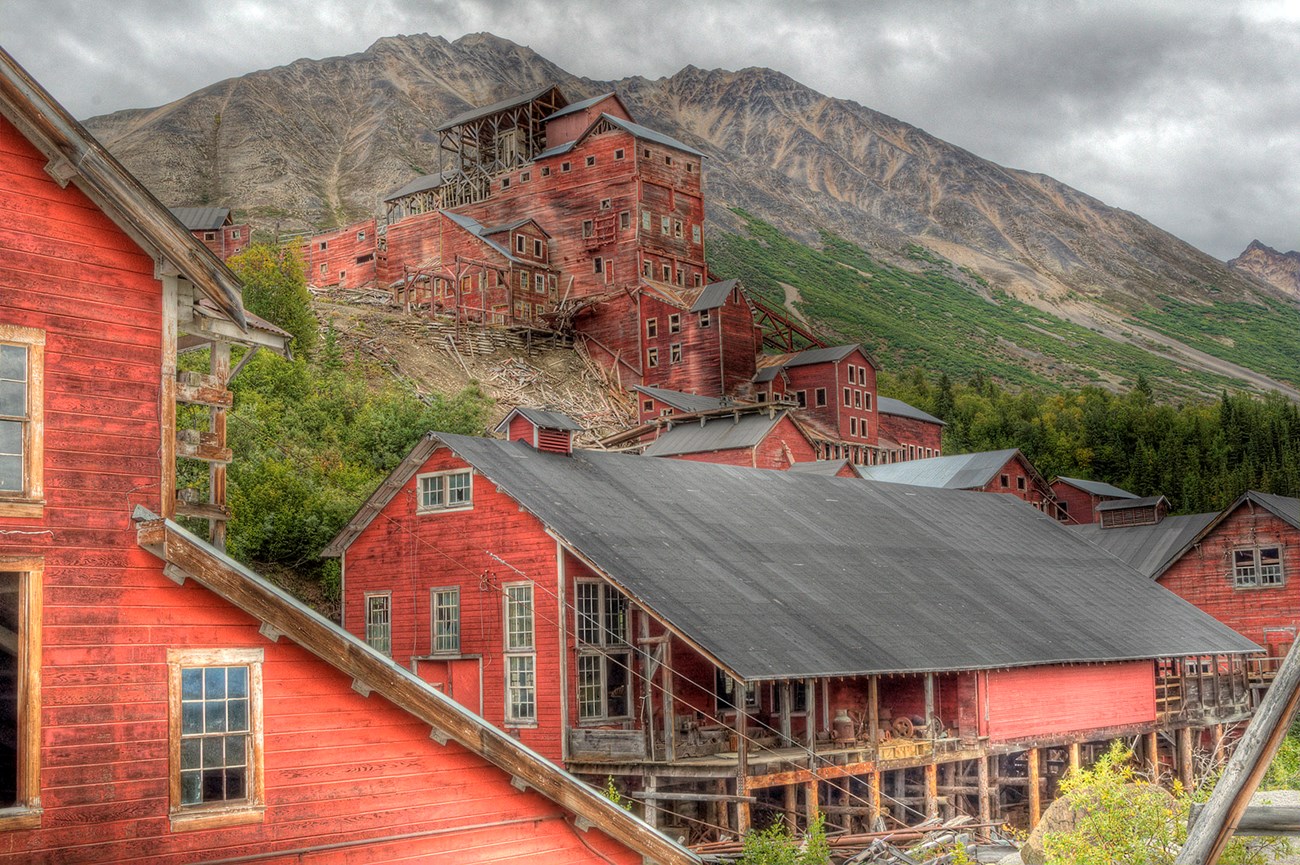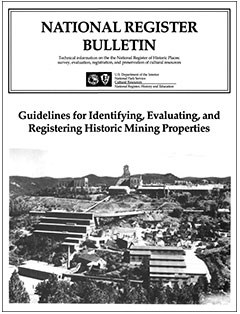
National Park & Preserve, Alaska.
NPS photo.
Introduction
Many parks boast rich mining histories and are active in preserving and even reconstructing mining-related historic structures and landscapes. Evidence of earlier mining can also be viewed in the National Park System. Alibates Flint Quarries National Monument in Texas and Wupatki National Monument in Arizona preserve the remains of prehistoric extraction sites, and Pipestone National Monument in Minnesota protects the pipestone (red mudstone) quarries of the Yankton Sioux.
Mining-related Archeological and Cultural Resource Types
Resources from mine and quarry operations range from prehistoric to recent, and are a component of several archeological and cultural resource management categories:
-
Archeological Resources
Archeological resources are the material remains of past human activity. Archeological resources are typically buried, but may extend above ground. They are commonly associated with people who are distant from us in time, but may be products of more contemporary society. Examples of mining-related archeological resources that may include:
-
Native American stone quarries
-
-
Cultural Landscapes
Cultural landscapes are settings that humans have created. They reveal fundamental ties between people and land. Cultural landscapes encompass structures and installations that are a part of a defined landscape. Examples of mining-related resources that may be found in cultural landscapes include:
-
Abandoned mining settlements
-
-
Structures and Installations
Structures and installations are constructed objects that extend the limits of human capability. The NPS may consider above ground structures and installations as both archeological resources and historic structures. Examples of historic structures and installations related to mining operations include:
-
Mining equipment, tailings, and adits
-
-
Museum Objects and Collections
Museum objects are physical manifestations and records of human behavior and ideas. Examples of mining-related museum objects include:
-
Material remains from archeological and historical mining areas
-
Personal papers of people who lived and worked in historic mining sites
-


National Register of Historic Places
The National Register of Historic Places provides an important tool for evaluating and protecting mining properties. Utilizing uniform criteria to evaluate significance and employing established integrity standards, the National Register process provides a valuable yardstick for measuring the historical significance of mining properties.
Mining camps have been the focus of many mining-related National Register nominations. The National Register published a bulletin to assist with the evaluation and listing of mine sites: Guidelines for Identifying, Evaluating, and Registering Historic Mining Properties.
NPS sites on the National Register
| Ref# | Property Name | Request Type | Status Date | Restricted Address | City | County | Federal Agencies | Other Names | State | Street & Number |
|---|
National Heritage Areas
National Heritage Areas (NHAs) are designated by Congress as places where natural, cultural, and historic resources combine to form a cohesive, nationally important landscape. Through their resources, NHAs tell nationally important stories that celebrate our nation’s diverse heritage.
Designated National Heritage Areas Related to Mining
Last updated: October 28, 2022
